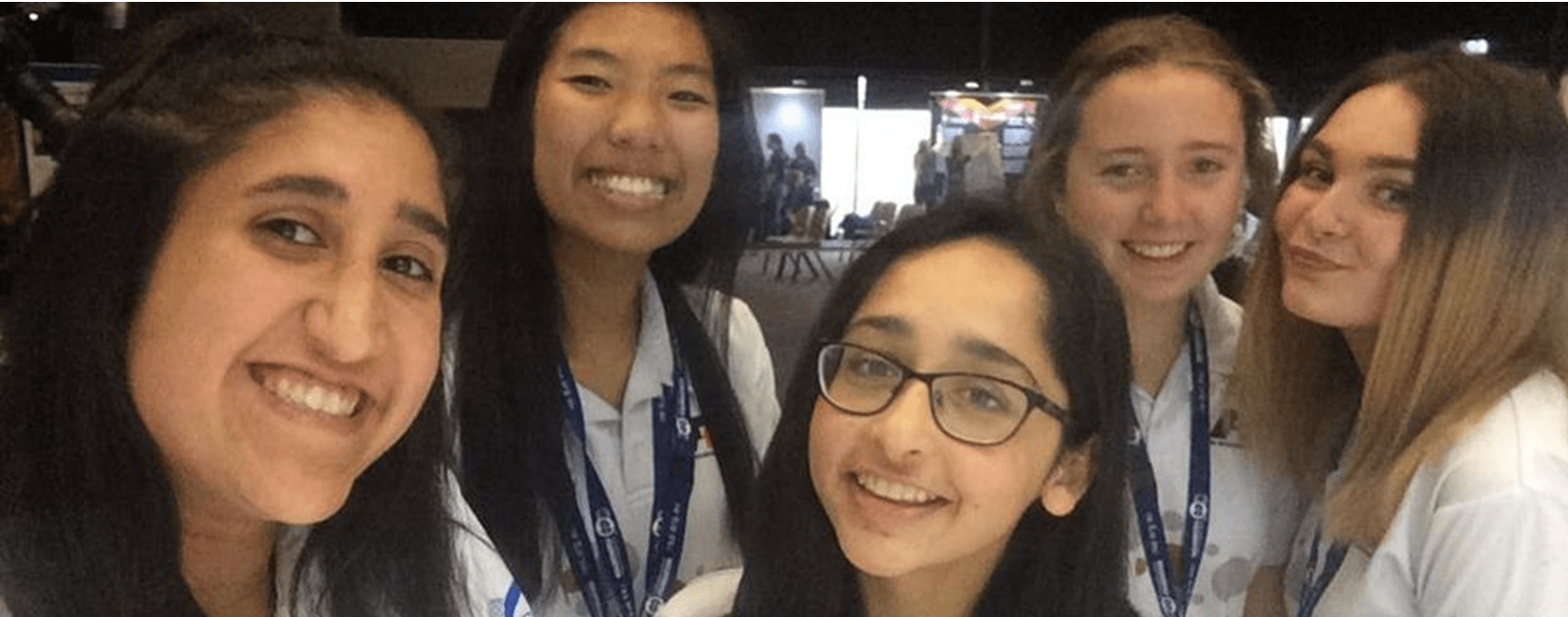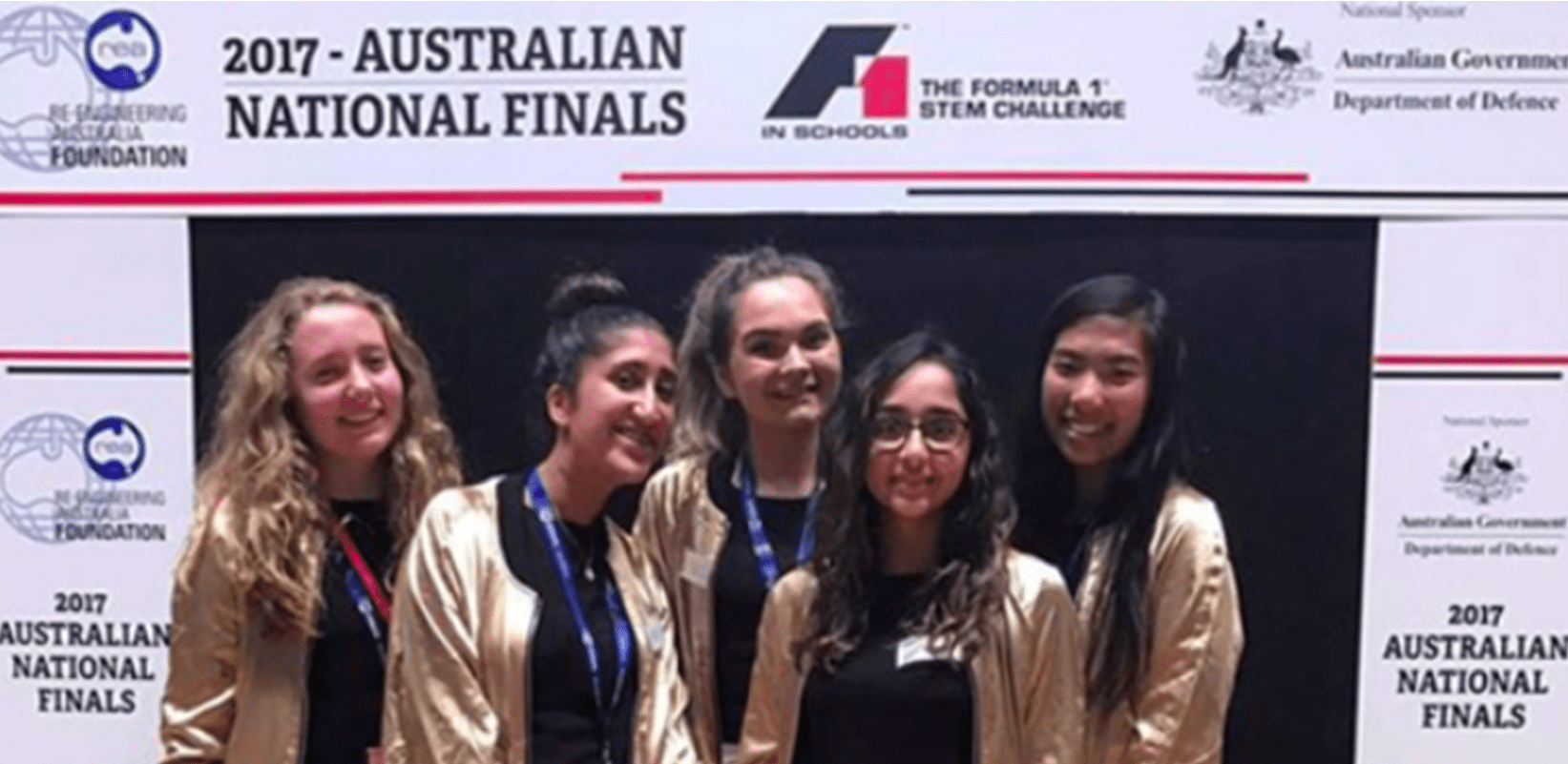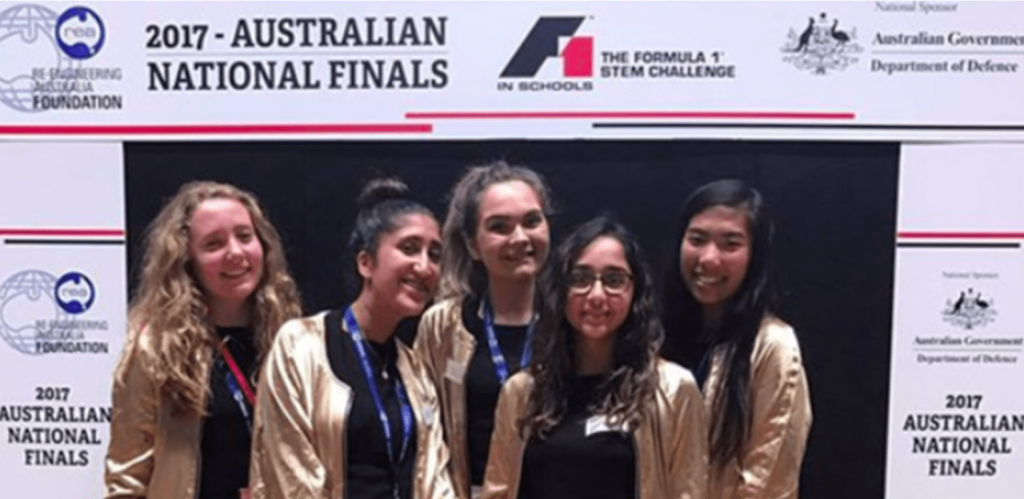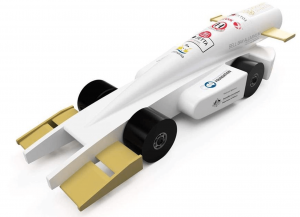In the lead-up to the 2019 National Finals, we thought we’d share some insights from Hoai Nguyen, Design Engineer from the Golden Diversity F1 in Schools team from Queechy High School (QHS), Launceston, Tasmania. Hoai was closely involved in using CFD simulations and Augmented Reality for their car and display for the 2017 World Finals.
-
When starting off in F1 in Schools, what aspects of the car aerodynamics did you find most challenging to understand?
In beginning my F1 journey, it was more a struggle to actually learn and use CAD to design a fully functional F1 in Schools car. However, as we developed our skills and experience within the competition, we looked further into aerodynamics as a major part in which we can gain a speed advantage on other teams. Through all our research, the most challenging aspect to understand in aerodynamics would have to be overall airflow in terms of shape and other elements of the car that impacts. Although there were complicated aerodynamic principles incorporated into our research, shape had the biggest impact on our design’s performance, and therefore, would have been vital to understand exactly how different changes affected the overall airflow of our car.
-
How did CFD simulations help you to understand the aerodynamics of the car, and compare the impact of design changes?
CFD simulations helped greatly in making aerodynamic decisions in terms of design, for our final car. In using our initial CFD platform and then moving into using ANSYS in the leadup to the World Finals, we were given drag numbers on the design, as well as surface pressures, airflow simulations around the body of the car, contours, vectors and a range of other data that gave us the best opportunity to make informed decisions for our final car. We were able to observe different shapes and how they perform through the air, as well as gaining an understanding of the areas we must change – signified by the colour coding of pressure etc.
In implementing design changes from these simulations, we noticed the change in surface pressure, become more neutral blue rather than high pressure areas shown by red. We also observed a decrease in drag numbers and a much better air flow around the body of the car, reducing the turbulent wakes around the body and achieving a more streamlined flow.
-
How many design iterations did you go through during this year’s design process? How many CFD simulations did you run in total?
During the 2017 season, we went through at least 26 major design iterations, plus many more smaller changes that were also made to each prototypes. Out of these design changes, we simulated all 26 through CFD, with our final 5 iterations with ANSYS to achieve a more accurate and detailed simulation results & ensure that our changes were positively impacting the car’s performance.
-
How did you intend the use Augmented Reality (AR) for the World Finals?
With the great opportunity to have an Augmented Reality Experience for our World Finals, we intended to use it as an interactive way to present our engineering design process to both those examining our Pit Display as well as to our engineering judges – which would have been a very novel and impressive way of showcasing our design/development as well as the results of our CFD simulations.
-
What were some benefits of using AR when competing overseas at the World Finals?
During our 2017 National Finals, we had a car display in which we had to manufacture and showcase all our design prototypes we had made from the beginning to that point in our journey. This was a very long and tedious way of showcasing our models, as well as a hassle to carry all the physical designs around with us. Therefore, in using the AR experience, it helped in saving time to focus on more important elements of the competition, as well making travel much easier, as most of our cars were made of balsa wood, which could have been a hassle to bring back into Australia. The AR experience also became a multi-purpose simulation, as it had flow simulations, design processes and other cool functions to showcase the engineering side of the competition. It was also easily accessible and easy to use, especially for the large amount of people who would have used it at the competition.
In using the AR experience to showcase our engineering processes, the major aspect we wanted to highlight with this experience was our design process, as well as having the opportunity to observe the differences and improvements between each iteration by looking at the simulation results of each design.









